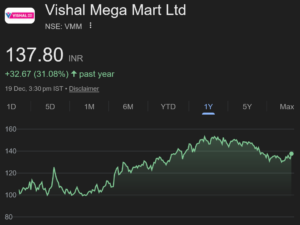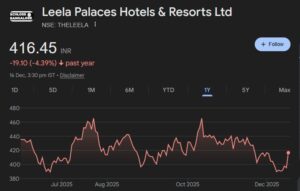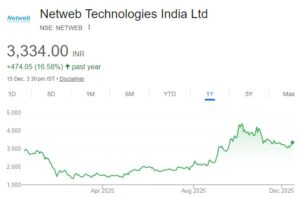

Firstly, there is no doubting Relaxo’s credentials as a super-duper multibagger stock. If you had bought the stock 10 years ago, on 1.1.2003, your holding would have grown an incredible 41 times. If you had bought it 5 years ago (at the peak of the market), on 1.1.2008, you would have made 9 times. If you would have waited for the great crash of 2008 and bought on 1.1.2009, you would have multiplied your money 23 times. Even if you had bought the stock on 1.1.2012, you would have doubled your money (254%).
Now, the question is whether you can ignore a stock like that? What is to prevent the stock from showing the same performance all over again over the next ten years?
Prof. Sanjay Bakshi has conducted a detailed stock study on Relaxo Footwears in why he has analyzed what led to the stupendous success that the stock enjoyed in the past and whether those factors are still valid and can be replicated in the foreseeable future. His analysis can be summarized as follows:
(i) Relaxo has, by using iconic brand ambassadors, increased the visibility of its products and created a popular brand which has earned it to earn superior returns on capital. This can be seen from the fact that while Relaxo earned a pre-tax Return on Equity (ROE) of only 14% 10 years ago, this surged to 35% last year.
(ii) Branding works because customers love the brand ambassadors and buy what the celebrities want them to buy. Branded products are treated as more exclusive and valuable than the unbranded ones and there is a degree of price inelasticity that they enjoy. Consumers are relatively indifferent to the higher price that the branded product commands.
(iii) Due to branding, there has been a quantum jump in Relaxo’s fortunes. Relaxo’s market capitalization has soared 15x in five years and 37x in ten years.
(iv) Despite all the branding that Relaxo has done, it’s average realisation per pair of footwear is just Rs 100! That’s less than $2. Prof. Sanjay Bakshi this “staggering”.
(v) Does Relaxo have the potential to produce premium footwear and charge premium prices for it? One can look at “Havaianas”, the world’s most popular brand in flip flops – a Brazilian one. The base Havaianas are sold at $18 while the high-end flip flops are sold for $90. If Relaxo seeks to go the Havaianas route, the sky is the limit for its realizations.
(vi) Two other impressive factors about Relaxo are (i) its policy of paying low dividends and deploying the retained earnings in the business at a high ROE and (ii) its policy of reducing the credit period that the customers (wholesalers/ retailers) can enjoy, a sign of dominance in the market place.
(vii) Also because Relaxo follows the conservative accounting standard of charging off all the advertisement expenditure to the P&L A/c instead of capitalizing them, its accounted/ reported earnings may be lower than its economic earnings.
| Relaxo Footwears’ Financials | |||||
| Y/E March (Rs. cr) | FY2010 | FY2011 | FY2012 | FY2013E | FY2014E |
| Net sales | 554 | 686 | 860 | 989 | 1,148 |
| % chg | 35.9 | 23.9 | 25.4 | 15.0 | 16.1 |
| Net profit | 38 | 27 | 40 | 50 | 67 |
| % chg | 160.2 | (28.8) | 48.5 | 26.1 | 33.7 |
| EBITDA margin (%) | 13.8 | 9.6 | 10.5 | 10.7 | 11.6 |
| EPS (Rs.) | 31.4 | 22.4 | 33.3 | 41.9 | 56.1 |
| P/E (x) | 23.9 | 33.5 | 22.5 | 17.9 | 13.4 |
| P/BV (x) | 8.2 | 6.7 | 5.2 | 4.1 | 3.1 |
| RoE (%) | 41.0 | 22.0 | 26.0 | 25.6 | 26.5 |
| RoCE (%) | 21.8 | 14.3 | 19.5 | 20.1 | 23.0 |
| EV/Sales (x) | 1.9 | 1.5 | 1.2 | 1.1 | 0.9 |
| EV/EBITDA (x) | 13.7 | 15.9 | 11.6 | 10.0 | 7.8 |
Will Relaxo Be Able To Earn High ROEs On A Sustainable Basis:
(viii) There are two things that enable Relaxo to earn high ROEs on a sustainable basis in the future. The first are its powerful brands which have high recall amongst the customers (Relaxo spent Rs. 55 crore on advertising last year). The impact of the branding is that the volumes have gone up and so the company enjoys a low cost advantage arising out of economies of scale. The second is the “moat” that Relaxo and the absence of serious competition (discused below).
Does Relaxo Have A “Moat”?
(ix) Bakshi also considers the all important question on whether Relaxo has a “moat” and whether there are high “entry barriers” to the barriers. He concludes that there are significant entry barriers which will prevent competition from destroying Relaxo’s ability to earn high ROE.
He explains that to be able to compete in a meaningful manner with Relaxo, a competitor would have to (i) price the products low, (ii) offer customers long credit, (iii) spend large sums of money on marketing and branding etc. He concludes that given the high amount that Relaxo spends on advertisement and the high volumes that it is able to sell gives it a big competitive advantage.
The other thing that creates an entry barrier is that Relaxo has eight manufacturing plants spread across the Country and has more than 9,000 employees. It will be difficult for a competitor to replicate this scale.
Also, Relaxo works on wafer-thin margins. The profit per pair of footwear is only Rs. 4.48. The only way a competitor can make meaningful profit from such margins is by having huge volumes. However, being able to command the same volumes as Relaxo is very difficult.
Three Positive Factors About Relaxo:
(x) There are three things to like about Relaxo. The first is the fact that the business is not one that is going to become obsolete anytime. Unlike high technology businesses, the footwear industry is not prone to rapid and continuous change he says.
The second thing is that though the price realisation per pair of footwear has increased over time to about Rs. 100 per pair of footwear, the average retail price that customers pay is only about Rs 160 per pair. The low ticket price for the product does not affect Relaxo’s target market segment – India’s growing middle class – and so the customers are relatively price insensitive and this gives Relaxo the opportunity to take price increases without alienating the customer.
Bakshi cites the example of Gillette blades to prove his point. Because the amount of money a man spends on shaving in a year as a proportion to his annual income is very low, the temptation to shift to a lower-cost brand is subdued.
There is untapped pricing power in Relaxo, which is a significant source of value, Bakshi concludes.
The third thing is Relaxo’s future prospects. “What I love about Relaxo is its growth potential” Bakshi says. In FY 13, Relaxo sold 100 million pairs which is peanuts compared to the population of 1.2 billion. The size of the Indian footwear market is around Rs 26,300 crores and expected to reach Rs 38,700 crores with a CAGR of 15% by 2015. So, there is a huge potential.
In conclusion, Sanjay Bakshi says “I am confident that Relaxo will continue to grow faster than the market by taking market share from the unorganised players – just as it has been doing over the last several years”.
Will Relaxo Dilute Equity/ Raise Debt?
Relaxo has not diluted equity for the past several years. The debt:equity ration stands at 0.96. Sanjay Bakshi opines that because Relaxo has no capex requirements, it will able to self-fund the growth by utilizing retained earnings. He also opines that the quality of the balance sheet will improve as positive receivables move towards becoming negative, thereby reducing working capital requirements.
He also opines that Relaxo will be able to sell 250 million pairs of footwear a decade from now at higher realisations and higher margins.
So, is there any reason why Relaxo should not be the next super-duper multibagger stock for you to buy? If you want inspiration, you can take heart from the fact that Dolly Khanna, the investor with the golden touch with multibaggers like TTK Prestige, Hawkins Cookers, Amara Raja Batteries and several others to her credit, holds 120,342 shares in Relaxo worth about Rs. 10 crore.





